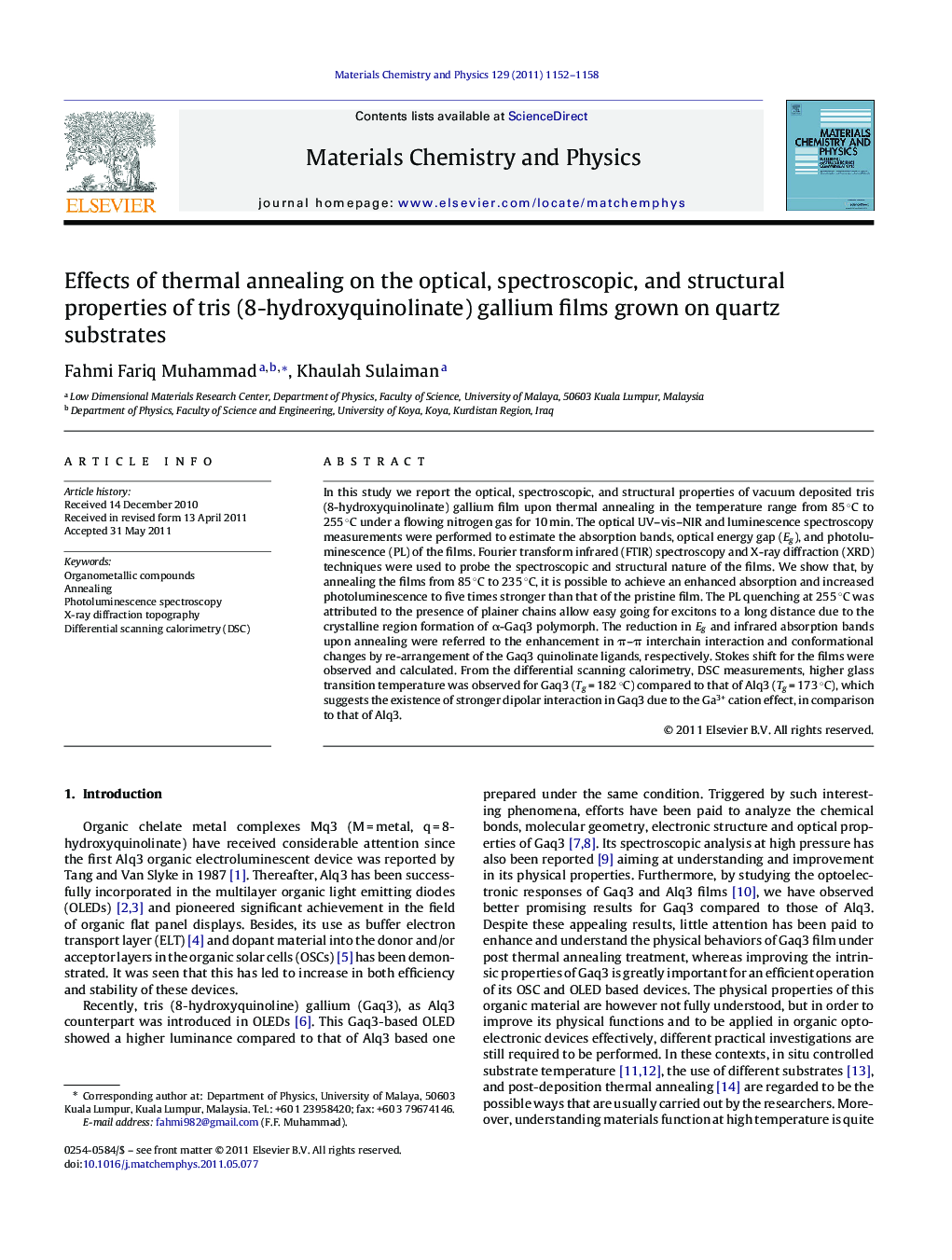| Article ID | Journal | Published Year | Pages | File Type |
|---|---|---|---|---|
| 1524664 | Materials Chemistry and Physics | 2011 | 7 Pages |
In this study we report the optical, spectroscopic, and structural properties of vacuum deposited tris (8-hydroxyquinolinate) gallium film upon thermal annealing in the temperature range from 85 °C to 255 °C under a flowing nitrogen gas for 10 min. The optical UV–vis–NIR and luminescence spectroscopy measurements were performed to estimate the absorption bands, optical energy gap (Eg), and photoluminescence (PL) of the films. Fourier transform infrared (FTIR) spectroscopy and X-ray diffraction (XRD) techniques were used to probe the spectroscopic and structural nature of the films. We show that, by annealing the films from 85 °C to 235 °C, it is possible to achieve an enhanced absorption and increased photoluminescence to five times stronger than that of the pristine film. The PL quenching at 255 °C was attributed to the presence of plainer chains allow easy going for excitons to a long distance due to the crystalline region formation of α-Gaq3 polymorph. The reduction in Eg and infrared absorption bands upon annealing were referred to the enhancement in π–π interchain interaction and conformational changes by re-arrangement of the Gaq3 quinolinate ligands, respectively. Stokes shift for the films were observed and calculated. From the differential scanning calorimetry, DSC measurements, higher glass transition temperature was observed for Gaq3 (Tg = 182 °C) compared to that of Alq3 (Tg = 173 °C), which suggests the existence of stronger dipolar interaction in Gaq3 due to the Ga3+ cation effect, in comparison to that of Alq3.
► Achieving a broad absorption band for Gaq3 covering the whole UV and some parts of visible spectra. ► Increasing photoluminescence emission to five times stronger than that of pristine film. ► Conformational changes towards the formation of crystalline α-Gaq3 polymorph. ► Determination of glass transition temperature for Gaq3 (Tg = 182 °C) and Alq3 (Tg = 173 °C). ► Improving and understanding the physical properties of Gaq3 film by means of thermal treatment.
